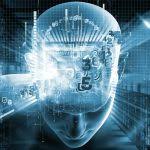How AI Powers Facial Recognition from Pixels to Predictions.
Facial recognition technology has rapidly evolved from a futuristic concept to a commonplace application in our daily lives. Behind the scenes, Artificial Intelligence (AI) is the engine driving this transformation, enabling computers to ‘see’ and identify faces with remarkable accuracy. This article will break down how AI is utilized in facial recognition, exploring its mechanics, applications, and the ethical considerations it raises.
Capturing the Image and Identifying Key Features:
The journey begins with capturing an image or video of a face, usually through a camera. This visual data is then fed into the facial recognition system. The first step is face detection, where AI algorithms scan the image to identify the presence of a human face. This often involves techniques like Haar feature-based cascade classifiers, which are trained to recognize patterns characteristic of human faces.
Once a face is detected, the AI focuses on feature extraction. This stage involves identifying and measuring key facial landmarks, also known as nodal points. These points include the distance between the eyes, the width of the nose, the depth of the eye sockets, and the shape of the cheekbones. Sophisticated algorithms, often based on Convolutional Neural Networks (CNNs), can automatically locate and extract these features with high precision.
Converting Features into Mathematical Representations:
The identified facial features are not just simple measurements. They are converted into a unique mathematical representation; a kind of digital fingerprint called a facial signature or facial embedding. This signature is essentially a vector of numbers that represents the distinctive characteristics of the face.
This conversion is crucial because it allows the system to compare faces across different lighting conditions, angles, and expressions. By representing the face as a mathematical vector, the system can abstract away from the raw pixel data and focus on the inherent structural properties of the face.
Comparing Against Databases and Machine Learning Advancements:
The generated facial signature is then compared against a database of known faces. This is where the power of machine learning truly shines. The system uses algorithms like cosine similarity or Euclidean distance to measure the similarity between the new facial signature and those stored in the database.
Advancements in Machine Learning:
* Deep Learning: CNNs, a key component of deep learning, are extensively used for feature extraction. These networks learn to identify complex patterns in images, allowing them to accurately identify facial features even under challenging conditions such as varying lighting, angles, and partial obstructions.
* Generative Adversarial Networks (GANs): GANs can be used to generate synthetic facial images, which are then used to train the facial recognition systems. This helps the systems become more robust and accurate, especially when dealing with limited real-world data.
* Transfer Learning: Trained AI models can be repurposed to improve facial recognition accuracy in new datasets as models are trained with large datasets and transferred to other datasets to improve facial recognition accuracy.
Reducing False Positives and Improving Accuracy:
One of the critical areas where AI excels is in minimizing false positives (incorrectly identifying someone) and false negatives (failing to identify someone). Machine learning algorithms are trained on vast datasets of faces to learn the subtle nuances that differentiate individuals.
* Data Augmentation: Techniques like rotating, cropping, and adding noise to training images help the system become more resilient to variations in real-world conditions.
* Thresholding: The system uses a similarity score threshold. If the similarity score between the new signature and a signature in the database exceeds this threshold, the system reports a match. By carefully tuning this threshold, the system can balance the risk of false positives and false negatives.
* Ensemble Methods: Combining the results of multiple facial recognition algorithms can further improve accuracy and reduce errors.
Applications in Security, Retail, and Social Media:
The application of AI-powered facial recognition extends to numerous industries:
* Security: Airport security, surveillance systems, and access control utilize facial recognition to identify individuals, verify identities, and enhance security measures.
* Retail: Retailers use facial recognition to personalize shopping experiences, track customer behavior, and prevent theft.
* Social Media: Social media platforms employ facial recognition to tag individuals in photos and videos, enhancing user experience.
* Law Enforcement: Law enforcement agencies utilize facial recognition to identify suspects, locate missing persons, and solve crimes.
* Healthcare: AI-powered facial recognition aids in patient identification, especially in emergency situations.
Privacy and Ethical Considerations:
The widespread use of facial recognition technology has ignited debates regarding privacy and ethics. Key concerns include:
* Data Security and Storage: The storage of facial data raises concerns about potential data breaches and unauthorized access, leading to privacy violations.
* Bias and Discrimination: Facial recognition systems can exhibit biases based on race, gender, and age, leading to discriminatory outcomes.
* Surveillance and Monitoring: The use of facial recognition for mass surveillance raises concerns about potential abuse and infringement on civil liberties.
* Transparency and Accountability: Lack of transparency in how facial recognition systems are trained and used raises concerns about accountability and fairness.
Conclusion:
AI has revolutionized facial recognition technology, enhancing its accuracy and broadening its applications across various industries. From capturing images and identifying key features to converting them into mathematical representations and comparing them against databases, AI plays a crucial role in the entire process. However, the increasing use of facial recognition raises significant concerns regarding privacy, ethics, and potential biases. As the technology continues to evolve, it is essential to address these concerns through regulations, guidelines, and ethical frameworks to ensure its responsible and equitable use. Balancing the benefits of facial recognition with the need to protect individual privacy and prevent discrimination is crucial for a future where AI-powered technologies serve humanity in a fair and ethical manner.






